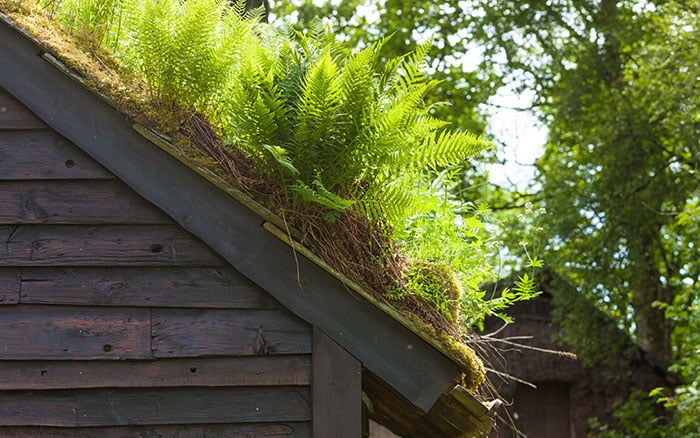As our gardens are an extension of our homes, we want to design them so we can enjoy them. But of course, they are spaces that are particularly useful for wildlife, including pollinators. So, a great way of incorporating more greenery into your garden for a delightful display is by planting a green roof on your garden shed.
Soften the structure
Sheds are great for storing tools, equipment, pots, paint, and plenty of other garden wares.
Alternatively, they can be converted into a garden room with furniture such as an armchair to be used as a summer room.
Whatever their purpose, the structures can look harsh and not always seamlessly fit the garden design. This can be changed by painting or embellishing the exterior.

However, another way of softening the surroundings is to plant grasses and elegant plants around it – or utilise the roof to plant a green roof.
Layer up

Green roofs are created with several layers including a waterproof root barrier, drainage layer, water retention layer, soil, then plants.
Thinking practically, these can add quite a bit of weight to the structure, so it may be worth weighing up if you will need some extra support, such as a rooftop frame.
Also, it will depend on the steepness of the roof, as the slope and weight can have an impact.
For example, a 30-degree angle roof will be unsuitable, but 20-degree angle roofs can be kitted out with several compartments to ensure the material and sections all stay put.
1. Firstly, the waterproof layer needs to be attached which will protect the roof surface from water damage and any leaks. For this you could use builder’s plastic or a plastic pond liner.
This first layer can either be attached directly to the roof or wrapped around a layer of plywood which is then secured to the structure.
2. Next is the drainage layer. These can resemble a honeycomb style plastic material.
3. To stop the drainage layer from clogging up, this is topped with a filter sheet that also helps to retain moisture.
4. After, the compost can be added, and this may differ depending on the plants that are being grown.

A depth of around 8cm of growing medium will be suitable for a display of herbs, wildflowers, strawberries, and salad.
What to grow on your shed green roof
More space to grow in your garden is never a bad thing! Sedum matting was developed in the 1960s, and have continued to grow in popularity with awareness of living ecologically increasing.
Sedum matting is like a flower garden on a roll, they can be installed like tiles. They are a low maintenance, frost hardy, and drought tolerant. The beauty is that they require feeding around once a year, with no need to mow or deadhead.

Bear in mind that the gradient of your roof will also impact the areas that have more or less water. The spots at the peak of the shed roof will dry out quicker than the areas that are lower down.

Leave A Comment